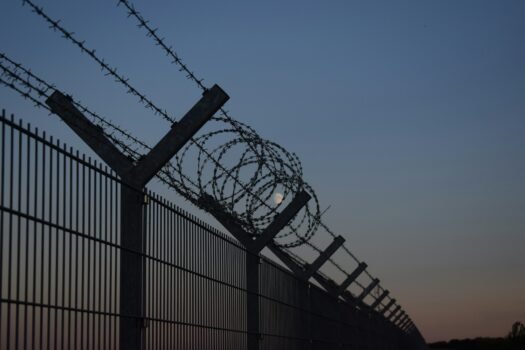Learning from Past Approaches
The strategy employed by Ron DeSantis in addressing illegal immigration has drawn significant attention due to its innovative yet ultimately limited approach. One notable aspect of his policy was the establishment of a small-scale detention center aimed at addressing the surge of undocumented immigrants. Initially, this approach seemed promising, as it offered a localized solution that could potentially streamline processes for those apprehended. However, the inherent limitations of such small-scale facilities became increasingly evident over time.
First and foremost, the sheer volume of undocumented immigrants crossing borders challenges the efficacy of a limited detention center. With millions of individuals potentially subject to apprehension, the resources available at even the most well-equipped facilities are often insufficient to manage the influx. Consequently, this leads to overcrowding, strained resources, and inadequate legal processing, ultimately undermining the intent of the initiative. Such environments often fail to provide the necessary attention and care to those detained, raising concerns about humanitarian standards.
Moreover, small-scale detention centers typically lack the infrastructure needed to address comprehensive immigration reform. Rather than serving as a long-term solution, these facilities may merely act as stopgap measures, effectively postponing the larger issues surrounding illegal immigration. Without a robust framework that tackles the root causes of immigration such as economic disparity and violence in home countries, reliance on limited detention centers can perpetuate cycles of ineffective management and enforcement.
Learning from the shortcomings of DeSantis’s approach presents opportunities for President Trump to craft more effective policies. By understanding the importance of scalable strategies that address the scale of the illegal immigration crisis, future initiatives can be designed with greater effectiveness in mind. Ultimately, the examination of past efforts serves as a critical tool to inform and enhance future approaches toward controlling illegal immigration.
Identifying High Population Areas of Illegal Immigration
In addressing the issue of illegal immigration, it is crucial for President Trump and Republican policymakers to effectively identify regions with high concentrations of undocumented immigrants. A strategic approach to this problem begins with comprehensive data collection and analysis to pinpoint these high population areas. Utilizing various methods to gather and assess this data provides the foundation for implementing targeted immigration policies.
One significant avenue for obtaining demographic information is through collaboration with local, state, and federal agencies. These entities can provide valuable insights through census data, law enforcement reports, and community surveys that highlight areas with elevated immigrant populations. Furthermore, immigration advocacy organizations can also supply data that reflects demographic changes and trends. Implementing Geographic Information System (GIS) technology can enhance data visualization, enabling policymakers to identify hotspots of illegal immigration at a more granular level.
Another effective method for identifying high population areas involves engagement with local communities. Community outreach initiatives can foster relationships with residents, who can provide firsthand accounts and information regarding their neighborhoods. Establishing communication with local business owners, schools, and community organizations allows for a holistic understanding of the immigrant landscape.
Targeting identified regions for immigration control measures serves multiple purposes. By concentrating efforts where undocumented populations are most prolific, resources can be allocated more effectively, resulting in enhanced enforcement and community support. Moreover, it can help in addressing the root causes of illegal immigration by promoting discussions around legal pathways and integration programs in those areas. This targeted approach not only aims to mitigate illegal immigration but also fosters a collaborative environment for local stakeholders, encouraging a comprehensive view of immigration reform.
Expanding Existing Jails and Prisons: A Practical Solution
The issue of illegal immigration remains a critical concern for many nations, particularly for the United States. One potential strategy that warrants serious consideration is the expansion of existing jails and prisons. This approach offers a range of benefits, primarily focused on increasing the capacity to manage undocumented individuals effectively and efficiently. As current facilities are already equipped with the necessary infrastructure and personnel, expanding these institutions can serve as a more cost-effective solution than constructing new, smaller holding centers.
By enlarging the capacity of existing jails and prisons, the government can facilitate the apprehension of undocumented individuals and maintain order in the immigration system. This expansion could potentially deter illegal immigration rates, as the perceived consequences of illegal entry may become more pronounced. With an increased capacity, law enforcement agencies would have the tools needed to detain individuals who may be violating immigration laws more promptly and systematically.
Moreover, the expansion of these facilities can enable more efficient processing of individuals held for immigration violations. By providing proper resources within the already established framework of jails and prisons, it becomes feasible to offer legal assistance and expedite hearings. This not only enhances the judicial process but also ensures that individuals are treated fairly while their cases are addressed.
In contrast to constructing new holding centers, which may require considerable time and financial investment, the enlargement of existing facilities emerges as a practical solution to the challenges of managing illegal immigration. The incorporation of modern technology and updated security measures within these facilities can further improve both safety and efficiency. Overall, expanding current jails and prisons presents a comprehensive strategy to tackle illegal immigration whilst maximizing resource utilization and preserving public safety.
Creating a Deterrence Factor: Fear and Consequences
One pivotal element in addressing illegal immigration involves establishing a deterrence factor, which relies heavily on instilling fear about the consequences of such actions. The rationale behind this strategy is based on the psychological principles of deterrence, suggesting that individuals will be less likely to engage in unlawful behavior if they perceive the risks of doing so as being substantial. In this context, expanding jails and prisons can serve as a powerful visual representation of the repercussions that await those who enter the country illegally.
A well-implemented system of enforcement, highlighting the visible penalties of illegal immigration, can lead to a significant shift in behavior among undocumented immigrants. By creating a landscape where the consequences of unlawful entries are both apparent and stringent, the government may encourage higher rates of self-deportation, as individuals reconsider the risks involved in remaining within the country. This approach emphasizes the importance of not just the existence of punitive measures but also their visibility. When potential immigrants understand that a system of enforcement exists, with real penalties tied to illegal entry and residency, the notion of successfully evading these consequences diminishes significantly.
Moreover, an effective deterrence strategy must also involve consistent messaging. Clear communication regarding penalties for illegal immigration serves to reinforce the seriousness of the situation. Law enforcement agencies, through community outreach and media channels, can develop campaigns that emphasize the legal ramifications of illegal entry. Additionally, reinforcing partnerships with local agencies can help establish a seamless synergy in addressing issues related to illegal immigration, further ensuring that consequences are firmly rooted within communities.
Ultimately, the establishment of a deterrence factor stems from a combination of fear, visible enforcement, and comprehensive communication. By strengthening these elements, President Trump can potentially create an environment that not only deters illegal immigration but also fosters a climate where undocumented immigrants feel compelled to reassess their status in the United States.








